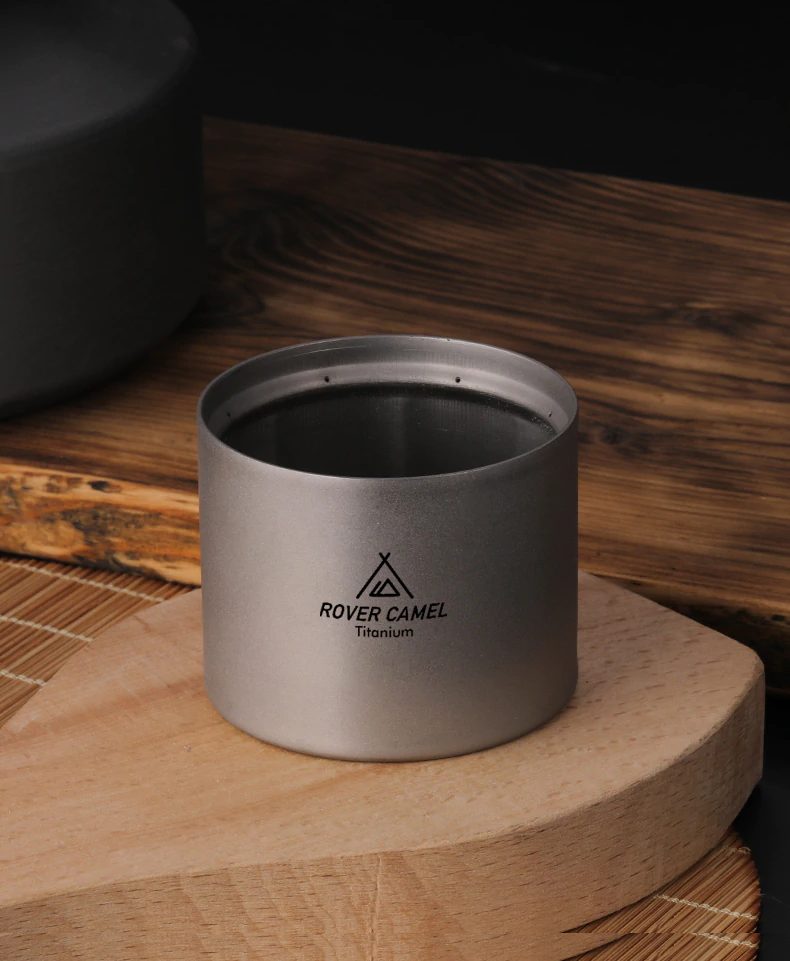As much as I love the Trangia cooking system, if you are by yourself and just need to boil water, there are lighter tools that can be used. I mentioned some alternatives in my previous post:
- Toaks Siphon Stove (22 g, H: 43 mm, W: 50mm), and
- Clikstand Alcohol Stove System
- Firebox Nano
I’ve been waiting for a good sale on the Toaks Siphon Stove all summer. I managed to find a titanium siphon stove from a manufacturer on AliExpress called “Rover Camel“. It is an OEM “homage” to the Toaks Siphon stove and is marketed under other brand names such as the:
- Lixada – Camping Mini Alcohol Stove Lightweight Titanium Liquid Spirit Alcohol Stove Furnace for Outdoor Camping Equipment
- Ti Artisan – Outdoor New arrival Mini Titanium Alcohol Stove liquid alcohol stove Portable Camping Hiking Spirit Stove WST062, and
- Goshawk EDDY-100.
It appears to be the same design, but with slightly larger dimensions (H x W) 50 mm x 60 mm vs. 43 mm x 50 mm on the Toaks. It has a slower blooming time than the Toaks (10-15 seconds) but it does have jets that output to a centralized area. This seems appropriate for use on “tall” and “thin” camping pots. There is no way to simmer the flame so this is basically a water boiler.
Making and designing these Capillary Hoop Stoves (CHS) is difficult. A lot of this innovation was driven by a Japanese Youtuber named Tektoba and he has some very innovative designs where he/she varied such things as the number of jets, apeture, width and depth of the reservoir. The video below shows the painstaking detail that Tektoba puts into these handmade stoves.
While the Rover Camel stove functions, I don’t think it is an optimal design. The bloom time is significantly longer than the Toaks version from whom it derives its design from. Moreover, the denatured alcohol that I am using (in this case a 85:15 split of ethanol and methanol with some component of ethyl acetate), it suffers from thermal pressure and the heat of the system vapourizes the alcohol in the reservoir, as opposed to just in the sidewalls, igniting the extra alcohol vapour. This leads to incomplete combustion with sooting and varnishing of the pot at a ~2.5 cm (~1 inch) distance from top of the stove to the bottom of the pot. The sooting gets worse the further I raise the pot up. I’ve read that “Ethanol whips the wild stallion” on CHS-style burners and that this is a common problem with CHS-style stoves and denatured ethanol in general. The solution is to cut the fuel with some water, use 100% methanol, or add more methanol to the ethanol. All this does is reduce the over all BTU output.
I was hoping to use denatured alcohol having found a source in Quebec, but while you get a slightly faster burn time and less fuel usage than methanol (methyl hydrate), I dislike the soot and varnishing. Looking at the MSDS for this alcohol, it appears to have up to 5% Ethyl Acetate (typically a byproduct of distillation) and that may be creating the soot. There is minor soot produced in the Trangia system too. Since denatured alcohol is so difficult to find at the moment, I’m likely just going to stick with Methyl Hydrate from here on out (after I clear through the next 3 litres).

Rover Camel stove operates as advertised
One thing that I notice is that I don’t really have a “system” with this setup. You still require a stove stand and windshield (likely some heavy duty aluminum foil or a titanium windshield). So while you save on weight (in a very big way), you lose out on the integration, simmering capabilities and ease of use provided systems built around the Trangia burner (Trangia 25 / 27 and Clikstand as examples). You optimize for weight and compactness, but you won’t get the best usability.
I was considering a Firebox Nano as a stand, but settled on the Toaks titanium stove stand (I found it on sale for $24 CAD). I figure I should go all in on the ultralight setup. The Firebox Nano probably was a better choice, but I think I am using this as a sort of pandemic therapy. May still pick up the Nano, it’s a solid product and may make more sense for me. I’m making huge gains on weight savings for a solo setup, but I lose out quite significantly on pot stability and usability of the entire system. Everything from the non-integrated cooking system (separate burner, stand, wind screen, etc.) to the fuel choice doesn’t seem optimal.






Comments
One response to “Titanium Siphon Stove”
[…] November 15, 2020Titanium Siphon Stove […]